Follow us on twitter @teeplusplus
A logo
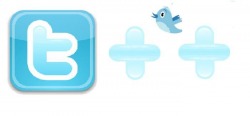
Our team has completed our logo. The logo represents our desire to be true to twitter, but to go beyond and enhance the usefulness of the service for a poster.
Optimal Time of Day to Tweet - Other Active Users
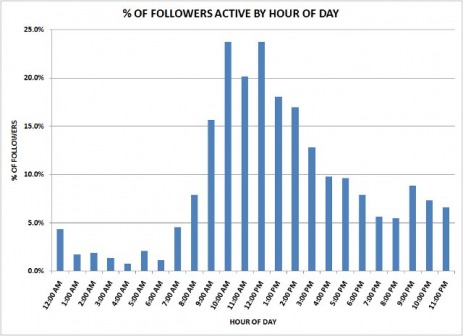
One way to measure the optimal time to tweet is the number of users that are active while you are tweeting. Especially if you want to establish "buzz" or talk about a real-time sale, this is key. Our metric shows that a tweet around noon est (the graph is in est) is optimal. Note that it doesn't really help here to divide users out by time zone - even though it is possible, since twitter users typically reach a global audience
Additional time of day user data
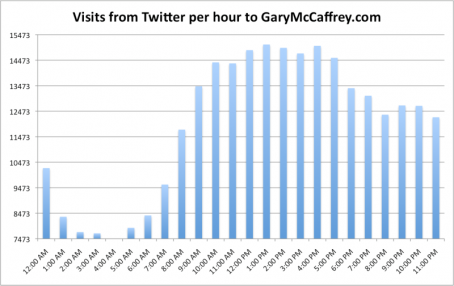
In addition to our direct Twitter data, we found data posted by Gary McCaffrey on his site, a popular finance blog, about when people followed twitter links to his site. In our analysis, we find it correlates well with our twitter user data, although the links appear to be a bit later in the day than in our other data. This is likely because Gary is based on the west coast, and thus posts his news stories later in the day, biasing his links
Keywords Matter
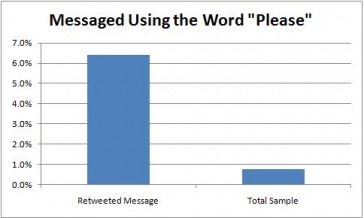
We tested our hypothesis that certain words and aspects of the message matter. We tried to use the word "please", mostly because we thought people like polite tweets, and, more importantly people often at the end of the message write "please retweet!". Sure enough, using the word please made it more than 6x as likely that a message would be retweeted. In the next part of the project, we expandd this to other words and punctuations
The day of the week matters to retweeting
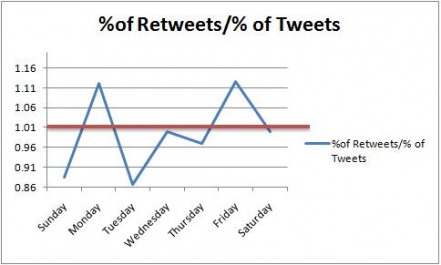
Monday and Friday are the best days to post a tweet if you want it retweeted. A tweet posted on Monday is around 20% more likely to be retweeted than a tweet posted on Tuesday
Its better to be direct
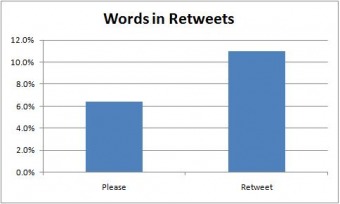
After seeing the power of please. We were even more direct and looked at the word "retweet". Normally this is used to directly convince someone to retweet your message. This is even more powerful than please, being found in around 11% of all our retweeted messages. Not surprisingly, the hashtag #ReTweet is the one that guarantees the most retweets.
Reference others (Use @)
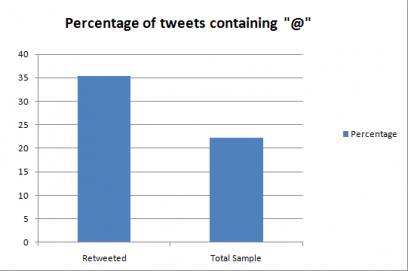
We hypothesized that using @ to quote someone else or talk about that person leads to more retweets, as it establishes credibility for the tweet and takes the Twitter friendship to the next level, thus making it more likely to receive retweets from that user in the future.
Indeed, the data confirms our hypothesis. The @ character appears approximately 12% more in retweets than in a random sample of tweets, which means that by referencing others you're almost twice as likely to get retweeted than you are without.(Bayes Rule)
Indeed, the data confirms our hypothesis. The @ character appears approximately 12% more in retweets than in a random sample of tweets, which means that by referencing others you're almost twice as likely to get retweeted than you are without.(Bayes Rule)
Links are Crucial
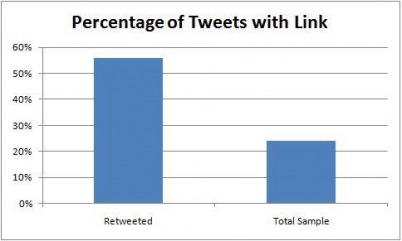
Our hypothesis was that having a link in a tweet would drastically increase the chance it was retweeted. This turned out to be more correct than we could imagine. In our data more than half of all retweeeted messages contained a link, more than double the occurrence of links in our sample size.
By using Bayesian analysis, we calculated that posting a link makes a tweet 5.6 times more likely to get re-tweeted than a tweet without any links.
By using Bayesian analysis, we calculated that posting a link makes a tweet 5.6 times more likely to get re-tweeted than a tweet without any links.
It helps to punctuate

Our hypothesis was that informal tweets without punctuation would be retweeted more often than formal ones. In this respect we were wrong. Clearly using periods made it more likely that a tweet was retweeted
It is good to get excited- but not as good as we thought
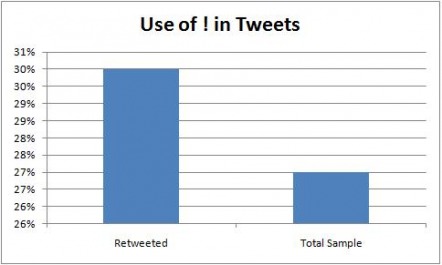
Using an exclamation mark did help in our sample to get retweeted, but only by about 3% which is not a significant result
Tweeting less leads to more Retweets
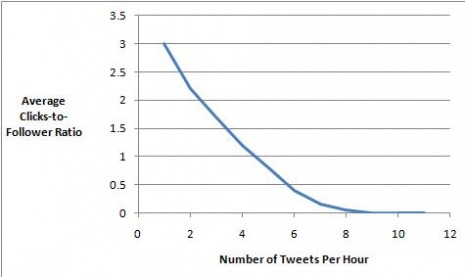
Once again, our hypothesis was proved wrong. Initially we felt that more tweeting would result in more retweets as users would become familiar with the popular tweeter. However, the data clearly shows that the more tweets per hour a user does, the less the tweets are retweeted.
Use #hashtags to get retweeted(But don't exaggerate)
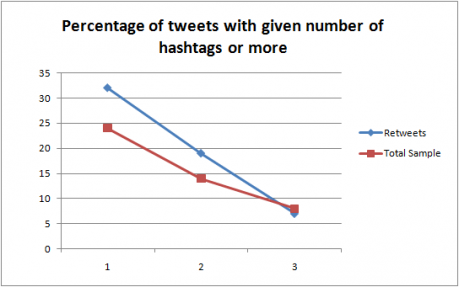
Using a hashtag (such as #data) ensures that all those people watching out for a given topic are likely to see your tweet. The data confirmed this hypothesis, as the percentage of tweets containing hashtags was much larger for the sample consisting solely of reTweeted tweets than for the general sample.
The most popular hashtags for retweets are: #reTweet, #FF (Follow Friday) as well as hashtags for trending topics.
However, using 3 or more hashTags decreases the chances of getting a retweet. A possible explanation for this is that a tweet with many hashtags is either spam or looks like spam.
Timing helps Retweeting

The next factor we looked at was the direct effect of timing and the amount of retweeting per tweet. Out hypothesis was that the timing would play a crucial role in determining how much a tweet was retweeted; and we felt that the best time would be in the afternoon. The data confirmed our hypothesis, as it is clear that between 3 and 4pm the probability of being retweeted is maximized.
Tasks Remaining- The Challenge Ahead
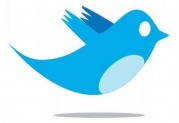
We have confirmed some hypotheses, and altered others. There are now 2 main tasks that lie ahead:
1. Personalize Data
We have great data on the overall effects of different aspects of tweets, which will significantly enhance our optimizer. We must now do our second main objective: Tailor the data to reflect the nuances of specific users. This will entail figuring out who in a network someone should tweet something to, or which topics in their network they should tweet about.
2. Create toolbar We now need to actually create the user interface, and decide how best to apply the lessons we have learned from our data into a usable tool for users to optimize their twitter experience. This is a fairly complex task, and will take the majority of our remaining time. There will be complex interplays with twitter that we need to master for this process.
1. Personalize Data
We have great data on the overall effects of different aspects of tweets, which will significantly enhance our optimizer. We must now do our second main objective: Tailor the data to reflect the nuances of specific users. This will entail figuring out who in a network someone should tweet something to, or which topics in their network they should tweet about.
2. Create toolbar We now need to actually create the user interface, and decide how best to apply the lessons we have learned from our data into a usable tool for users to optimize their twitter experience. This is a fairly complex task, and will take the majority of our remaining time. There will be complex interplays with twitter that we need to master for this process.
